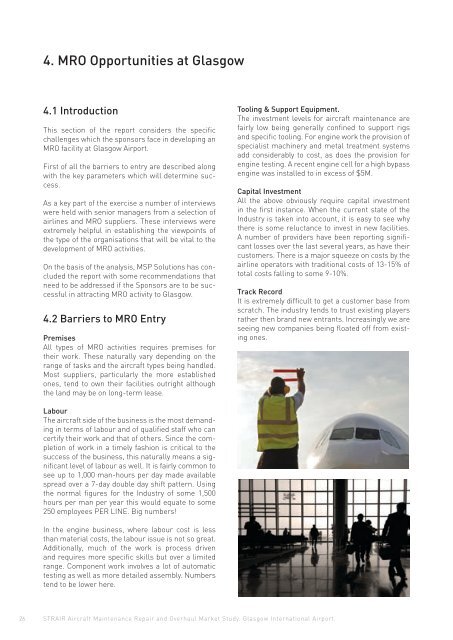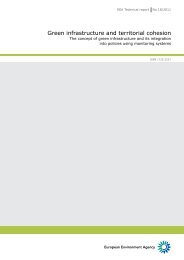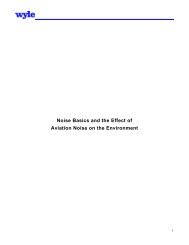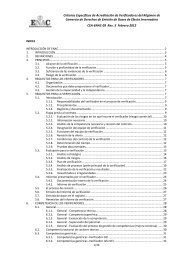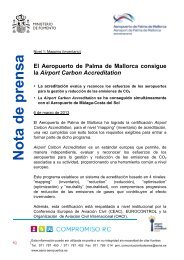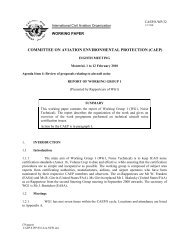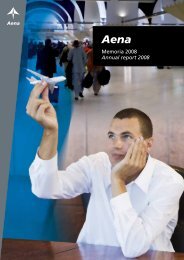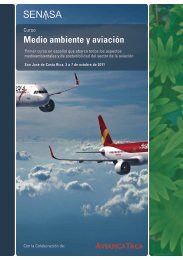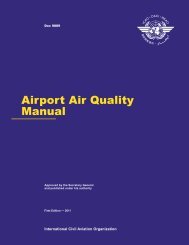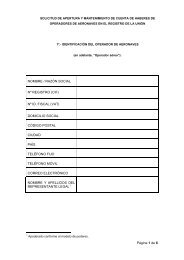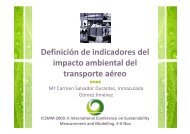Aircraft Maintenance Repair and Overhaul Market Study. - OBSA
Aircraft Maintenance Repair and Overhaul Market Study. - OBSA
Aircraft Maintenance Repair and Overhaul Market Study. - OBSA
- No tags were found...
You also want an ePaper? Increase the reach of your titles
YUMPU automatically turns print PDFs into web optimized ePapers that Google loves.
4. MRO Opportunities at Glasgow4.1 IntroductionThis section of the report considers the specificchallenges which the sponsors face in developing anMRO facility at Glasgow Airport.First of all the barriers to entry are described alongwith the key parameters which will determine success.As a key part of the exercise a number of interviewswere held with senior managers from a selection ofairlines <strong>and</strong> MRO suppliers. These interviews wereextremely helpful in establishing the viewpoints ofthe type of the organisations that will be vital to thedevelopment of MRO activities.On the basis of the analysis, MSP Solutions has concludedthe report with some recommendations thatneed to be addressed if the Sponsors are to be successfulin attracting MRO activity to Glasgow.4.2 Barriers to MRO EntryPremisesAll types of MRO activities requires premises fortheir work. These naturally vary depending on therange of tasks <strong>and</strong> the aircraft types being h<strong>and</strong>led.Most suppliers, particularly the more establishedones, tend to own their facilities outright althoughthe l<strong>and</strong> may be on long-term lease.Tooling & Support Equipment.The investment levels for aircraft maintenance arefairly low being generally confined to support rigs<strong>and</strong> specific tooling. For engine work the provision ofspecialist machinery <strong>and</strong> metal treatment systemsadd considerably to cost, as does the provision forengine testing. A recent engine cell for a high bypassengine was installed to in excess of $5M.Capital InvestmentAll the above obviously require capital investmentin the first instance. When the current state of theIndustry is taken into account, it is easy to see whythere is some reluctance to invest in new facilities.A number of providers have been reporting significantlosses over the last several years, as have theircustomers. There is a major squeeze on costs by theairline operators with traditional costs of 13-15% oftotal costs falling to some 9-10%.Track RecordIt is extremely difficult to get a customer base fromscratch. The industry tends to trust existing playersrather then br<strong>and</strong> new entrants. Increasingly we areseeing new companies being floated off from existingones.LabourThe aircraft side of the business is the most dem<strong>and</strong>ingin terms of labour <strong>and</strong> of qualified staff who cancertify their work <strong>and</strong> that of others. Since the completionof work in a timely fashion is critical to thesuccess of the business, this naturally means a significantlevel of labour as well. It is fairly common tosee up to 1,000 man-hours per day made availablespread over a 7-day double day shift pattern. Usingthe normal figures for the Industry of some 1,500hours per man per year this would equate to some250 employees PER LINE. Big numbers!In the engine business, where labour cost is lessthan material costs, the labour issue is not so great.Additionally, much of the work is process driven<strong>and</strong> requires more specific skills but over a limitedrange. Component work involves a lot of automatictesting as well as more detailed assembly. Numberstend to be lower here.26STRAIR <strong>Aircraft</strong> <strong>Maintenance</strong> <strong>Repair</strong> <strong>and</strong> <strong>Overhaul</strong> <strong>Market</strong> <strong>Study</strong>. Glasgow International Airport.


